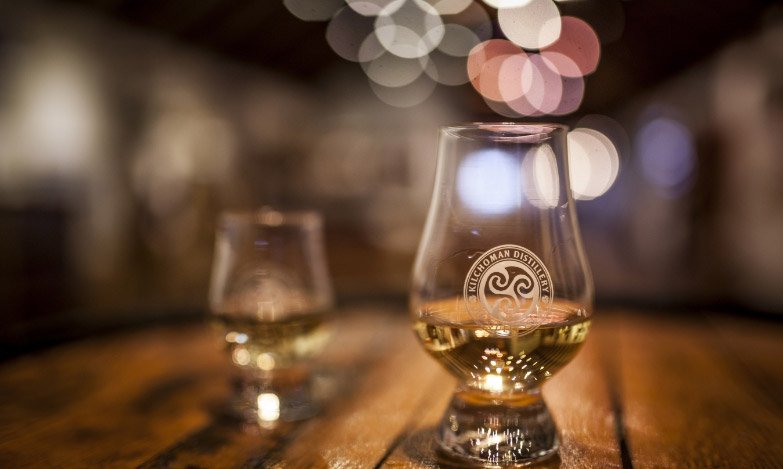Featured
Why Choose Dunnage Warehouses?
February 11, 2021At Kilchoman we mature all our casks in traditional dunnage warehouses here on the west coast of Islay. Not only is the type of warehouse important to the character of a whisky but also the location, with each cask absorbing all the microclimatic differences Islay has to offer.
There are three main methods used for maturing casks in warehouses, and some distilleries use more than one. The traditional method of ‘dunnage’ and then the more modern trend of ‘racked’ and ‘palletised’ warehousing.
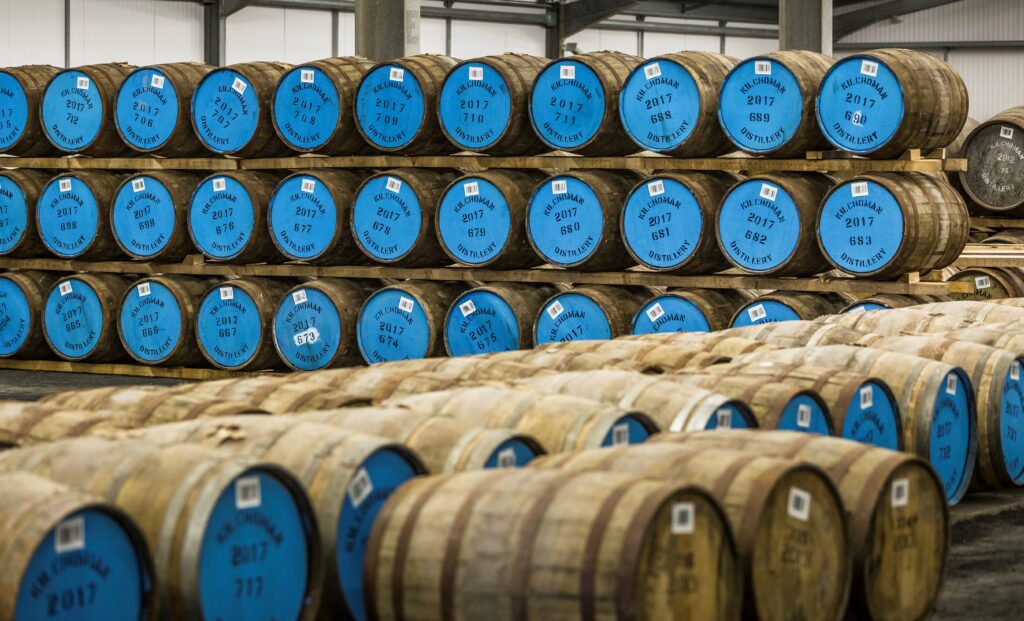
Dunnage – Dunnage warehouses are the traditional warehouse, low in height with thick walls and an earthen floor. Inside, casks are stacked on their sides, no more than three barrels high in stows (rows) which helps to ensure good air circulation and an even maturation throughout. The earthen floor means a dunnage warehouse is naturally humid with minimal seasonal weather variance in Scotland, the climate inside the warehouse remains constant over daily and yearly cycles. This high humidity and constant temperature results in all casks across the warehouse maturing at a consistent rate, being influenced by the humid conditions created by the surrounding soil.
However, dunnage warehouses are expensive to run, the earthen floor and low ceiling, although benefits to a maturing cask, result in higher costs as machines (such as forklifts) cannot be used. So, much like all other aspects of whisky-making life at Kilchoman, cask management is labour-intensive and must be done by hand.
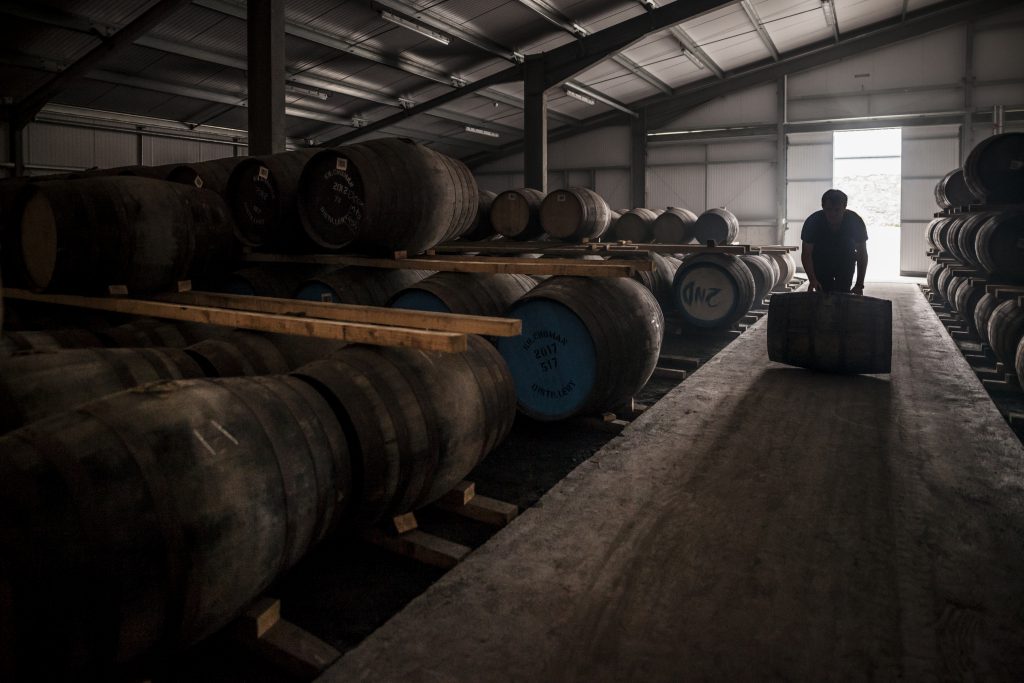
Racked & Palletised – In a racked warehouse, casks will be found stacked on their sides in steel frames, sometimes 12 or more high, while a palletised warehouse has casks stacked on their ends on pallets, often 6 or 8 layers high. The more modern racked and palletised warehouses came to prominence when distilleries expanded in size and the traditional onsite dunnage warehouses could no longer handle the number of casks being produced. Contrary to Dunnage, these warehouses are a lot taller, allowing for more barrels to be stacked on top of each other and have a concrete floor throughout. An obvious advantage to using this type of warehousing is the large number of casks that can be stored inside and the relative ease to access these casks. Forklifts and other machines can freely roam and manage the maturing whisky, an accountant’s dream compared to the labour-intensive dunnage warehouses.
Inside a racked or palletised warehouse there is a relatively lower humidity due to the concrete floors and a more seasonal change in temperature over the months and years of maturation. The lower casks will be cooler and more humid, more like that of a dunnage warehouse, the upper casks will be hotter with a lower humidity, leading to greater evaporation loss of water. This variation in conditions throughout the warehouse can mean maturation becomes more inconsistent and unpredictable across the warehouse.
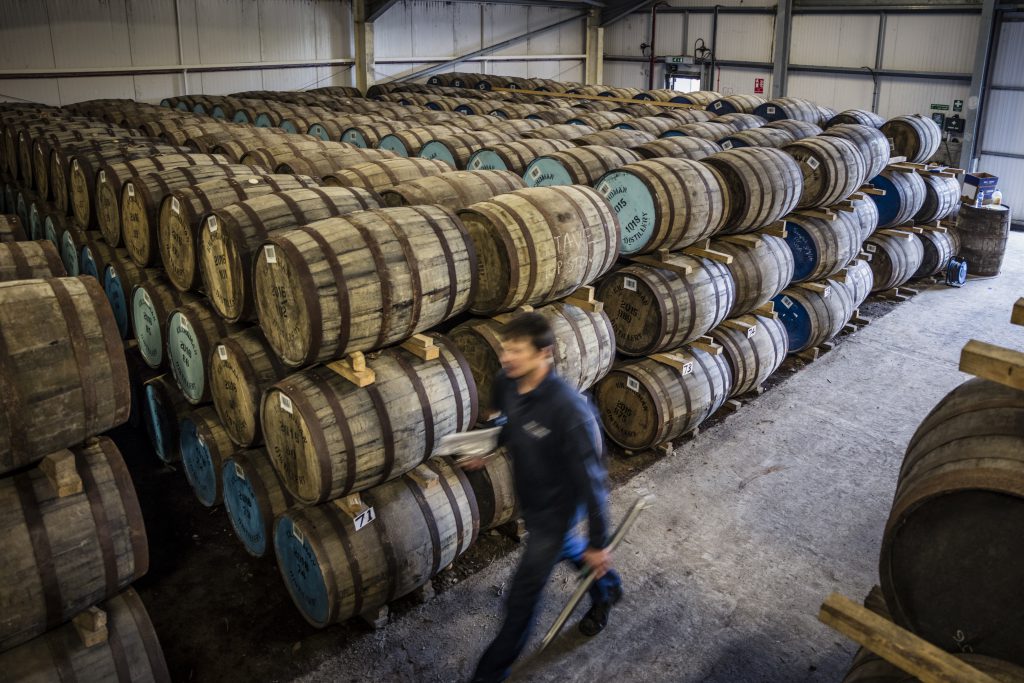
As well as the type of warehouse, the location of where it is situated is also an influencing factor. Whether it be the amount of wind, sun, rain or snow, the local climate can form an important part of cask maturation. For example, a dunnage warehouse taking up the moisture in the ground from water-soaked soil or a racked/palletised warehouse heating up due to the sun beating down on its roof (not always a problem in some parts of Scotland).
There are many variables throughout the whisky-making process and it is often difficult to say for sure what is the ‘best’ or ‘right’ way, something which makes whisky so fascinating. However, at Kilchoman we like to stick with tradition and mature in dunnage warehouses on Islay, as distillers would have hundreds of years ago. It might mean a little more hard graft for the team manoeuvring each cask by hand, but the cool humid temperature and consistent long term maturation in our dunnage warehouses help make Kilchoman single malt taste the way it does today.
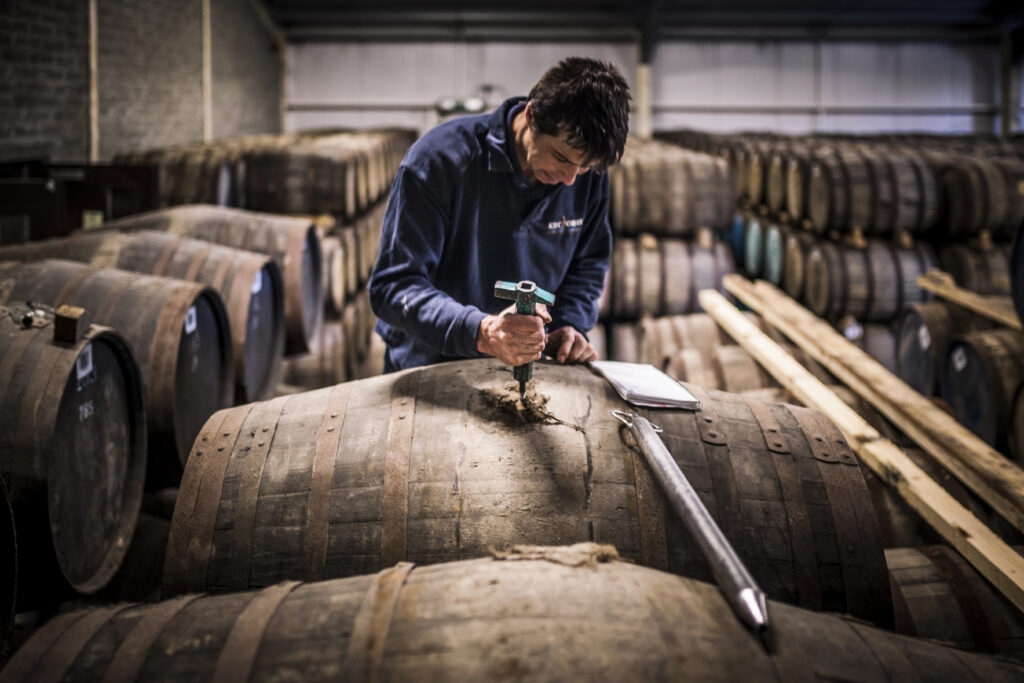
READ NEXT
Featured
Kilchoman Day
This year marks a major milestone for Kilchoman: 20 years since we fired up the stills on our farm distillery in the west of Islay, becoming the first new distillery to be built on the island in over 120 years. Two decades later, we remain proudly independent, family run, and…
June 13, 2025

